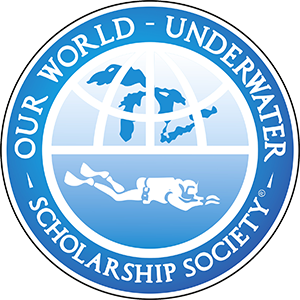The marine reserves of New Zealand were somewhere I wanted to explore as part of the scholarship and the Poor Knights Islands are the pinnacle of Kiwi diving. This group of islands, located 24 km off the coast of Tutukaka (approximately 2.5 hrs north of Auckland) is New Zealand’s second oldest marine reserve, and has been described as the world’s best subtropical diving! Marine Reserves are a keen interest of mine and I was already familiar with some previous studies that had taken place around the ‘knights’ so I was very stoked to be able to dive this area for almost two weeks!
My time there would have not been possible if it wasn’t for Jeroen Jongejans and Kate Malcolm, a great couple who’s business Dive! Tutukaka has grown incredibly since Jeroen founded the company in 1999 after running previous diving operations in the area. They are also actively involved in marine conservation initiatives, supporting local environmental education and promoting their conservation philosophy towards the dive industry. Now the shop runs five different vessels – ranging from the very impressive ‘Perfect Day’ for taking snorkelers out to the islands and three other very comfortable vessels that are arranged to suit the experience level of the divers, in addition to a tec/wreck boat for diving the inshore wrecks.
The Poor Knights Islands were declared a marine reserve in 1981 but was not fully protected until 1998. With increased protection, these islands has become a prime example of a successful marine reserve. This reserve has resulted in noticeable positive changes in the marine life, especially species such as snapper. In addition, the reserve provides huge economic benefits to the local community is a strong educational tool to both local and overseas visitors and has become an area for scientists to document changes in the marine community. The economic benefits have been huge with Dive! Tutukaka, now taking up over 14 000 people out to the islands annually. This equates to providing many jobs to local people, not only for the diving but also restaurants and accommodation.
The Poor Knights Islands has over 60 sites that are commonly dived – so every day the diving was different, including steep walls, pinnacles, deep gutters, arches, caves including the largest sea cave in the world (by volume) – Rikoriko cave. All sites had a variety of fish including moray eels out of their holes, large stingrays, huge schools of planktivorous fish and large species often targeted by fisherman such as snapper and kingfish. Some species particularly interested me such as the pink maomao and pigfish that were common here but only caught in deep water back home. Also the demoiselle (Chromis) that was found spawning on every dive site – contrary to the very similar one-spot puller, that would only spawn in certain aggregations in NSW. The macro life was also great with the rocks covered by various sponges, anemones, ascidians and the associated invertebrate life including large nudibranchs and crabs. So during the 16 dives I did around the islands, every day held its own surprises and even on the hour long boat trip, we encountered pods of dolphins, a group of 8 sunfish and a large manta ray that was jumping clear out of the water!
I would like to again thank Jereon and Kate for organising my time in Tutukaka and having me dive every day. All the skippers; Luke, Ben, Glenn, Sam, Evan and the dive crew; Kerrance, Dawn, Morgan, Teschna, Laura, Hemi, Ngaire and Kitaen for making me feel welcome. See you again soon!

I went diving with them 2 years ago. They are a great operation and the Poor Knights were one of the most unique places I have ever dived. Blue Mamao cave was amazing. Truly beautiful.
Allan Rios
Nanuet
NY